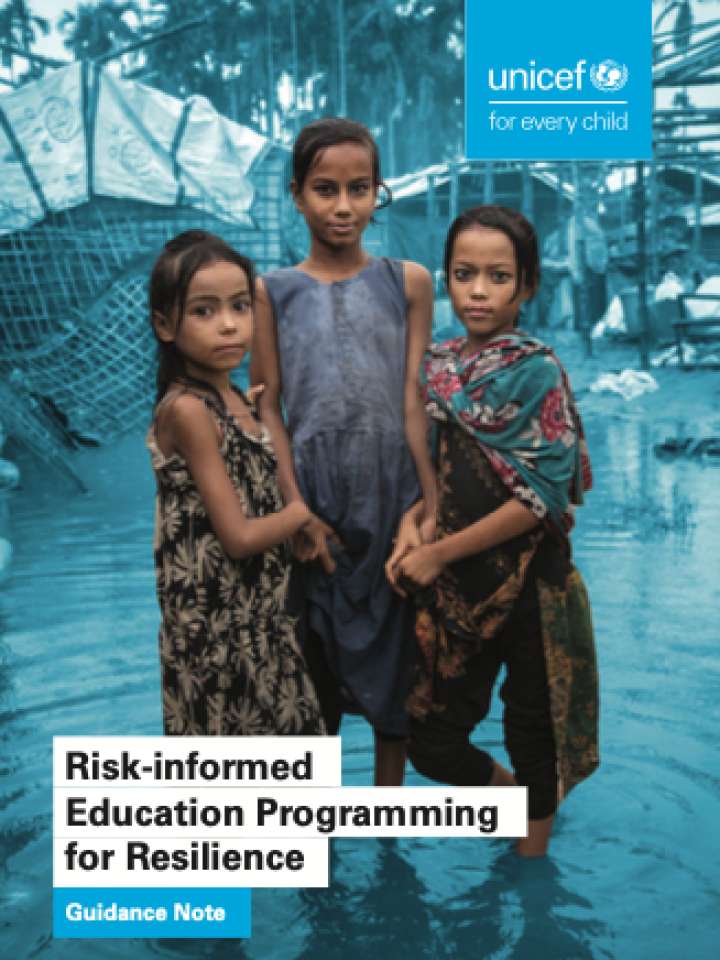Risk-informed education programming for resilience
This Guidance Note aims to help those who are working in humanitarian, transition, and development contexts to analyze risk and adapt education policies and programs to take risk into account, so that education populations and systems are more resilient. This Guidance Note covers: 1) Process of risk-informed education programming: plan, analyze, review, and adapt programs, and monitor and evaluate results, 2) Six education pro- gramme-related strategies that target specific hazards, shocks and stresses, and 3) Relevant supporting tools.
The Guidance Note describes, with examples, the following theory of change leading to risk-informed education programming:
- Three steps for disaster risk reducation: 1) Plan the risk analysis: who, what , where, when, why and how, 2) Analyze the risk: hazards, shocks and stresses, exposure, vulnerability, and capacity, and 3) Use the findings: scenarios, contingencies, programmes, M&E;
- Six strategies: 1) DRR (Disaster Risk Reduction) in education, 2) Climate change education, 3) School health and nutrition, 4) Conflict-sensitive education and peacebuilding, 5) child protection in education, and 6) school protection in education;
Explore further
